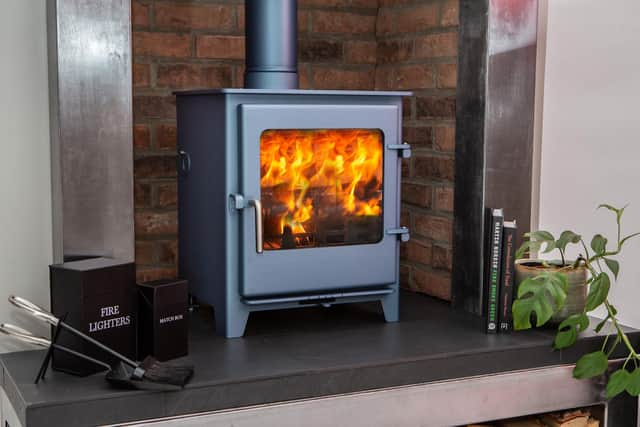Polluting or not wood-burning stoves are selling like hot cakes
Whatever the final analysis on air pollution, it has not dampened the desire to invest in the real fires. Suppliers are still reporting delays with some imported stoves now not available until 2024 due to issues getting the raw material from steel plants in Poland and Ukraine.
Some British manufact"urers who buy some components from abroad are also struggling. Stove making companies that source all their raw materials and components in Britain are faring far better but are still reporting an average wait time of at least three months between an order being placed and getting a stove delivered and fitted.This is mainly because they are finding it difficult to make them fast enough to satisfy demand. Nina Hodgson is a director at Town and Country Fires in Pickering, which designs, makes and sells stoves using British steel and components.
Advertisement
Hide AdAdvertisement
Hide AdShe says: “Usually the market calms down in spring and summer and that’s when we stock up making stoves but that didn’t happen last year and we were busy with orders. That’s why we and others now have a three month wait.”


Many recent orders have come off the back of the cost of living crisis, which has seen gas and electricity prices rocket with more of the same but with less government support promised next winter.
Those with open fires are among those switching as an open fire is 80 percent less efficient than an Ecodesign wood-burner.
However, with the cost of kiln-dried logs soaring by over 50 per cent during the last year because of supply and demand issues, the cost saving compared to gas is not as compelling as it once was.
Advertisement
Hide AdAdvertisement
Hide AdBuyers say the warm glow and cosy feel and the fact wood offers more fuel security and is from a renewable source, unlike fossil fuels, are also main drivers.
Those who are thinking of investing in a wood-burner and those who already have them must now ensure they conform to the latest regulations, not just because they could be fined if they don’t but to protect their own health and wellbeing. That’s also why buying an old second-hand stove may not be a good idea.
The Stove Industry Federation has this advice when buying:
*Choose an Ecodesign compliant wood-burning stove such as a clearSkies certified appliance andbe aware that if you live in a Smoke Control Area, your stove will also need to be Defra exempt.
*Ensure your stove is fitted and maintained by an appropriately qualified person such as one who is HETAS or OFTEC registered.
Advertisement
Hide AdAdvertisement
Hide Ad*Ensure you use quality wood. Look for the Ready to Burn logo to ensure your wood logs are at or below 20 per cent moisture content. Never use chemically treated wood or burn waste in your stove.
*Have your chimney swept at least once a year by a registered sweep. The Federation of British Chimney Sweeps has links to all the main sweep associations.
Andrew Chalk, rural insurance specialist at NFU Mutual, makes the point that many rural home owners have no gas connection and rely on a wood-burner as a main source of heat. His advice for them is this:
“Freshly-cut wood and that with a higher moisture content can cause greater heavy particle pollution and lead to the formation of tar, an extremely flammable substance which can start chimney fires. Treated wood can release carcinogenic fumes.
Advertisement
Hide AdAdvertisement
Hide Ad“Similarly, if you are using coal, use safer smokeless fuel, which produces less pollution and is better for your health and for the environment.
“Maintenance is also key. Chimneys should be lined and collared and regularly swept to remove harmful and flammable build-ups of soot and tar, and stoves themselves should have working vents, correctly closing doors and ideally a stove pipe thermometer.
“Oxygen levels are key to controlling the spread of fumes, so you need to be able to control the inflow of air. When starting the fire, leave the door ajar and vents open. This will reduce the amount of smoke produced.
"Once the fire is going, use the air vents to keep the fire at a regular level and temperature.”
Advertisement
Hide AdAdvertisement
Hide Ad“Running your stove at the correct temperature will also reduce the risk of destructive fire. Too low a heat, and heavy soot and tar build-up increases the risk of a chimney fire; too high, and dangerous temperatures risk house fires.”